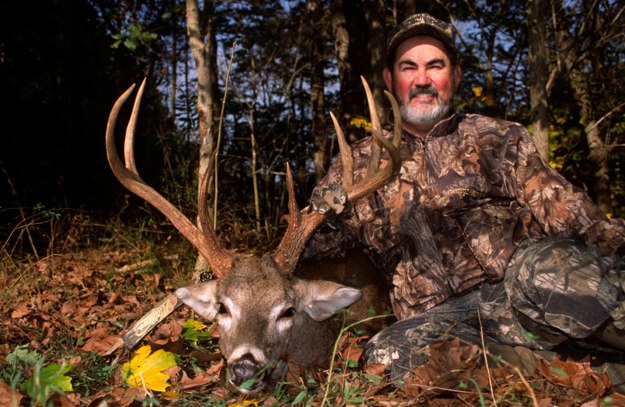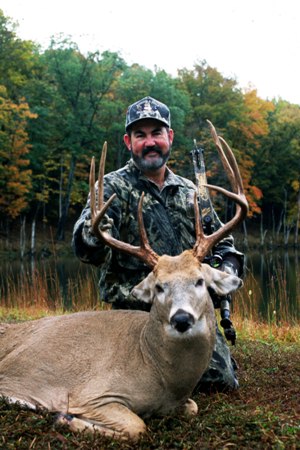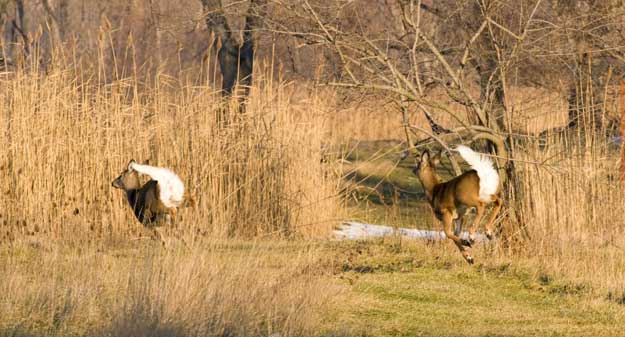
Editor’s Note: When you hear the words Knight and Hale, you automatically think of two bowhunters from Cadiz, Kentucky, who founded the Knight & Hale Game Call Company. But what most people don’t know is that originally David Hale was a farmer, and Harold Knight was a barber. These two men grew up during the evolution of the sport of bowhunting. Today, both men have harvested numbers of Pope and Young and Boone and Crockett bucks with their bows. Mossy Oak wanted to know how Harold Knight got into bowhunting, because much of the reputation of Knight & Hale was built from their expertise in taking deer with their bows.
I started bowhunting when I was in the sixth grade in 1956/1957. Back in those days, you couldn’t go into a hardware store and buy a bow and arrows. Sporting-goods stores hadn’t even been invented back then. The only bow that anyone knew anything about was a longbow. I lived in what’s now known as Land Between the Lakes, before Kentucky Lake and Lake Barkley were flooded and took our property. Back then, there was a population of fallow and white-tailed deer on that land. Every fall in about October, Land Between the Lakes held one of the few archery-only deer hunts anywhere. Each year about 100 bowhunters from all over the United States would come to Land Between the Lakes, camp out and hunt deer. Even the famous outdoorsman Fred Bear came there to hunt deer. I’d go up to those camps and talk to those archers, and Mr. Bear once gave me four arrows with his name written on them. I shot those arrows at squirrels, rabbits and everything I could until I destroyed them. I can’t imagine what an arrow built by the legendary Fred Bear with his name handwritten on it would be worth today. My bow was made from hickory. The first laminated bow that I ever saw was in one of those bowhunting camps. In those days, those longbow shooters were very accurate.
 I also remember the first time I ever saw a recurve bow. It was made by a fellow by the name of Buddy Watson. That bowhunting camp at Land Between the Lakes was only 2-3 miles from my home. I’d go and talk with those bowhunters every year when they came to Kentucky to hunt deer. I’d watch them practice shoot, and they'd give me arrows. I just loved being around those people.
I also remember the first time I ever saw a recurve bow. It was made by a fellow by the name of Buddy Watson. That bowhunting camp at Land Between the Lakes was only 2-3 miles from my home. I’d go and talk with those bowhunters every year when they came to Kentucky to hunt deer. I’d watch them practice shoot, and they'd give me arrows. I just loved being around those people.
The first compound bow I ever saw was in the late 1960s and was made by Allen Archery. A friend of mine had one of those bows, and he could hit a can with his arrow from 25 yards. I thought that bow was unreal. To me, it looked more like a musical instrument than a bow. My first compound bow was a Bear Whitetail Hunter. In the early days, when I got my first compound bow, I didn’t take many deer. We had plenty of deer, but I didn’t know how to hunt them. I thought I knew how to hunt them, but the deer always proved me wrong. Remember in 1960 and 1970, deer hunting was a new sport. Hunting deer with a bow was more or less in its infancy.
At 30 yards I was stacking arrows in the center of the target, and all of those arrows would fit in the bottom of a coffee cup. When I first started hunting with a bow, I couldn’t put one arrow out of 100 in the center of that target. Bows today are so much better than the bows we used back in the old days of bowhunting deer.
Day 2: Harold Knight Uses His Fiddle Knowledge to Build a World Champion Goose Call
Tomorrow: Harold Knight’s Worst Missed Turkey Ever






























